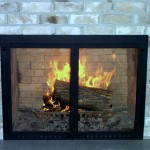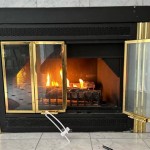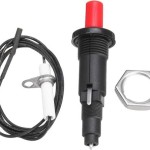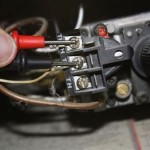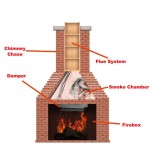Wall Fireplaces: Exploring the Advantages of Electric Models
Wall fireplaces, particularly electric models, have emerged as a popular heating and aesthetic solution for modern homes and apartments. These units offer a blend of visual appeal, functional heating, and installation convenience, making them a viable alternative to traditional wood-burning fireplaces. This article examines the key features and advantages of electric wall fireplaces, focusing on their design variations, heating capabilities, installation process, safety considerations, and operational efficiency.
Electric wall fireplaces primarily function as both a supplementary heating source and a decorative element. Unlike traditional fireplaces, they do not require venting or a chimney system, simplifying installation and minimizing structural alterations to a building. The core of an electric fireplace consists of heating coils or infrared elements that generate warmth. This heat is then circulated into the room via a fan system. The visual aspect is created by simulated flames, often using LED technology to project an image of burning logs or flickering flames onto a screen or reflective surface.
The aesthetic appeal of electric wall fireplaces is a significant factor driving their popularity. They are available in a wide range of styles, from minimalist modern designs to more traditional representations of classic fireplaces. Materials used in their construction vary, including brushed metal, tempered glass, and simulated wood, allowing for seamless integration with various interior design schemes. Unlike traditional fireplaces that are often bulky and require a significant footprint, wall-mounted electric fireplaces are designed to be relatively compact and space-saving. This makes them suitable for smaller rooms and apartments where space is a premium.
Flexibility in Design and Aesthetics
One of the most significant advantages of electric wall fireplaces is their design versatility. Manufacturers offer a diverse range of models that cater to different aesthetic preferences and spatial constraints. These can be broadly categorized into several types:
Linear Fireplaces: These are characterized by their elongated, horizontal design. They are frequently chosen for modern and contemporary interiors, as their sleek lines and minimalist appearance complement clean and uncluttered spaces. Linear fireplaces often feature customizable flame colors and intensity settings, allowing homeowners to tailor the visual effect to their liking.
Traditional Style Fireplaces: These models are designed to replicate the look of classic wood-burning fireplaces. They often incorporate features such as simulated brickwork, detailed log sets, and ornate mantels. While they provide the visual appeal of a traditional fireplace, they eliminate the associated maintenance and safety concerns.
Corner Fireplaces: Specifically designed to fit into corners, these fireplaces maximize space utilization and create a focal point in a room. They are particularly useful in smaller spaces where a traditional fireplace would be impractical.
Built-in Fireplaces: These models are designed to be recessed into a wall, creating a seamless and integrated look. They require more extensive installation than other types, but the result is a visually stunning and space-saving feature.
Beyond these basic types, many electric wall fireplaces offer customizable features such as adjustable flame speed, brightness, and color. Some models also include ambient lighting options that can be used to create a specific mood or atmosphere in the room. The range of options available allows homeowners to find a fireplace that perfectly matches their personal style and the overall design of their home.
Heating Efficiency and Zone Heating
Beyond their aesthetic appeal, electric wall fireplaces provide practical heating solutions for residential spaces. They are particularly effective as zone heating systems, allowing homeowners to heat specific areas of their homes without the need to heat the entire building. This can result in significant energy savings, especially during shoulder seasons when full central heating is not required.
Electric fireplaces typically use either resistance heating coils or infrared heating elements to generate warmth. Resistance heating coils work by passing an electric current through a coil of wire, which heats up and radiates heat into the surrounding area. Infrared heaters, on the other hand, use infrared radiation to directly heat objects and people in the room. Both types of heating are effective at raising the temperature of a space, but infrared heaters are often considered to be more energy-efficient because they directly heat objects rather than the air.
The heating capacity of an electric wall fireplace is typically measured in British Thermal Units (BTUs) or watts. Most models range from 4,000 to 5,000 BTUs, which is sufficient to heat a room of approximately 400 to 500 square feet. Many models also include adjustable thermostat settings, allowing users to precisely control the temperature of the room. Some models also offer a "flame only" setting, which allows the visual appeal of the fireplace to be enjoyed without generating any heat.
The efficiency of electric fireplaces varies depending on the model and the type of heating element used. In general, electric fireplaces are considered to be highly efficient, with most models converting nearly 100% of the electrical energy into heat. This is in contrast to traditional wood-burning fireplaces, which can lose a significant amount of heat through the chimney.
In addition to energy efficiency, electric fireplaces also offer convenience and comfort. They heat up quickly, providing instant warmth on demand. They are also quiet in operation, especially compared to some gas fireplaces that can produce noticeable noise from the blower motor. Furthermore, electric fireplaces do not produce any emissions, making them a cleaner and more environmentally friendly heating option.
Installation, Safety, and Maintenance Considerations
Electric wall fireplaces are generally easier to install than traditional fireplaces, as they do not require extensive venting or structural modifications. However, proper installation is crucial to ensure safety and optimal performance. Installation typically involves mounting the fireplace onto a wall using brackets or hardware provided by the manufacturer. It is essential to follow the manufacturer's instructions carefully and to ensure that the wall is strong enough to support the weight of the fireplace.
In most cases, electric wall fireplaces can be plugged into a standard electrical outlet. However, it is essential to ensure that the outlet is properly grounded and that the circuit is capable of handling the electrical load of the fireplace. Some models may require a dedicated circuit to prevent overloading the electrical system. Consulting with a qualified electrician is recommended if there are any concerns about the electrical capacity of the home.
Electric fireplaces are generally safe to use, as they do not produce open flames or emit harmful gases. However, it is crucial to follow basic safety precautions to prevent accidents. It is important to keep flammable materials away from the fireplace and to never leave it unattended when it is in operation. Most models also include safety features such as automatic shut-off functions that prevent overheating.
Maintenance requirements for electric wall fireplaces are minimal compared to traditional fireplaces. There is no need to clean ash or soot, and there are no chimneys to sweep. The primary maintenance task is to periodically clean the exterior of the fireplace with a soft cloth to remove dust and fingerprints. Some models may also have replaceable light bulbs or LED modules that need to be changed periodically.
Overall, electric wall fireplaces offer a convenient, safe, and aesthetically pleasing alternative to traditional fireplaces. Their ease of installation, low maintenance requirements, and design versatility make them a popular choice for homeowners looking to add warmth and ambiance to their living spaces.

Modern Flames Landscape Pro 70 3 Sided Electric Fireplace Wall Mount Studio Suite Mantel In White Wmc56lpmrtf Fireplaces Depot

Recessed Or Wall Mount Electric Fireplace Installations Explained Touchstone Home S Inc

Napoleon 50 In Entice Wall Mount Electric Fireplace Fireplaces Direct

Modern Flames Lpm 5616 Wmc Landscape Pro Multi 56 Inch Three Sided Electric Fireplace With Wall

Home Decorators Collection 36 In W View Wall Mount Electric Fireplace Black Sp6849 The Depot

36 Electric Fireplace Front Vent Wall Mount Or Recessed 3 Color Led Flame 5 Levels Of Brightness Media Options Remote Control By Northwest Target

Media Wall Electric Fire Guide Direct Fireplaces

Katell Loreto Italia Wall Mounted Electric Fireplace Bonfire Fireplaces

Electric Modern Evonicfires Compton 60 Inch White Wall Mount 3 Sided Fireplace 1000 Compt Whtstn Fireplaces Depot

Mondawe 36 In W Black Fan Forced Electric Fireplace The Fireplaces Department At Com
Related Posts

